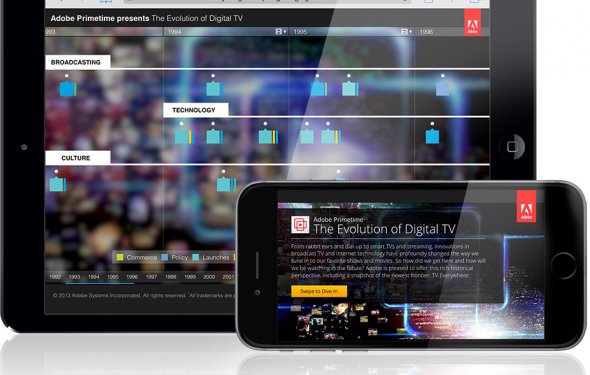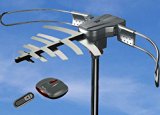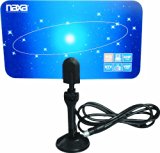History of digital TV

Present work from scholars whom study Internet rates find the united states of america has fallen behind in its broadband development. Comparisons with Asian counterparts particularly Singapore and Southern Korea underscores the success that some countries have experienced in leapfrogging in front of our nation by offering ubiquitous fiber-to-the-premises capabilities to residential clients. The horse-race nature for this narrative is similar to an equivalent history that played on society stage a few decades ago. Retracing the chronology of digital television’s development can show that arranging tomorrow’s policies around today’s technologies is extremely difficult and unwise for community interest.
The Increase of Japan and HDTV
Throughout the 1980s, Japan emerged as an economic superpower. A centerpiece of the country’s strategy ended up being the development of the solution economy as well as the creation of an information society. The potency of the government-led professional plan initiatives led Japan to predict that because of the year 2000, fully one-third of its industrial financial investment could be in production pertaining to information technologies.
Among the most important nationwide tasks to guide this objective ended up being hi-def Television (HDTV). Japan produced an intricate web of direct and indirect aids for HDTV development, including R&D tasks; integrated circuit design; and development of camera equipment, optical recording technologies, data transfer compression equipment and CRT, LCD and projection display products. An all-star lineup of Japanese businesses worked together in close collaboration (and absent any antitrust scrutiny) generate an HDTV juggernaut.
The US HDTV Marketplace
Acceptance because of the Federal Communications Commission (FCC) of either the Japanese or European HDTV technical standards would allow US consumers to benefit from improved quality of television pictures that have been perhaps not hampered by an antiquated 525-horizontal line system that had been authorized by the FCC inside 1940s. Much like today’s broadband network rate race, advocates rapidly arranged to convince the FCC your US ended up being harming consumer benefit, by maybe not allowing brand-new HDTV in to the market.
The usa was not in any position to attach a government-led industrial preparation work, because manufacturing currently have been ceded to foreign companies such as for instance Sony and Thomson. The FCC wisely noticed that due to the rapid pace of technical development, strict regulations may be counterproductive in the end. It organized an Advisory Committee on Advanced Television Service (ACATS), to spot feasible policy proposals. In 1988, during a period of time dubbed “Hell Week, ” the ACATS winnowed the potential area from 23 proposals to 6.The usual suspects were into the finalist group—Zenith, Thomson and Philips (representing European countries) and NHK (representing Japan). But two other organizations formed a partnership that supplied a completely different method of HDTV, which was according to analog technology.
an US organization, General Instruments (GI), surfaced as a surprise entry when you look at the ACATS finalist field. Having popularized a digital scrambling system for HBO called VideoCiper II, GI received upon its electronic encryption experience to recommend an all-digital tv system, that transmitted twice as much quantity horizontal interlaced outlines. This breakthrough was an actual game-changer, since in contrast, an analog HDTV system like NHK’s appeared like yesterday’s thoroughbred. In a surprising development, the Massachusetts Institute of Technology joined causes with GI to propose a digital, modern scanning system.
By 1993, with the encouragement of ACATS, five of finalists joined collectively in a Grand Alliance to combine the best features of their particular specific systems, all arranged around digital transmission and reception. NHK, representing Japan Inc., now had been an analog also-ran; appropriately, it dropped out of additional consideration because of the FCC.
In the long run, the FCC adopted a versatile standard for electronic television that would keep it into the market and consumers to straighten out which they preferred. Significant broadcasters and TV set manufacturers initially reflected these different approaches, but as computer systems and tv's begun to converge in design and functionality, the modern checking approach favored by Silicon Valley prevailed. By-law, all broadcast tv channels had been necessary to transform to electronic and surrender their analog stations in June 2009, which in turn opened up huge chunks of spectrum for innovative mobile programs and services.
Classes Learned through the reputation for HDTV
These days, while the FCC deliberates how-to advertise more robust broadband in the United States across long haul, it's worth recalling a couple of lessons through the digital tv transition. Very first, people who help what has been generally an “all-fiber” diet for broadband may well be like NHK in retrospect—fast movers but fundamentally slowly with what definitely is a marathon battle.
Get everyday updates from Brookings
2nd, FCC decision-making that reflects a fixed as opposed to dynamic technological view might quicker to perform in a rulemaking proceeding, but fundamentally could be short-sided once specific premises change–such as exactly how users really trade-off a lot of different fixed and mobile broadband experiences.
Third, just like electronic television, you can find effective market forces at play that align with, as opposed to weaken, people interest. Telecom, cable and content businesses each one is trading vast amounts of bucks to enhance customer experiences and supply the widest choice of broadband options; those who decide to discriminate as a company method should be this at their own peril, reverberating in lackluster financial overall performance.
Even though it might be beneficial to look to Asia and in other places as a competitive spur for broadband only at home, the enduring lesson that HDTV development may possibly provide is an expression that flexible however steady FCC leadership can portray an actual competitive advantage when it comes to United States globally as electronic change goes on apace.
|
Indoor HDTV Antenna - Ultra Flat and Paper Thin Antenna Booster, Powered for High Performance, Digitally Amplified for Long Range - Satisfaction Guaranteed & Full 1 Year Warranty Speakers (HDCat - LeopardHD)
|
|
FreeAir.tv HD TV Antenna (OTA/ Dual Band/ VHF/ UHF/ Multi-directional/ USB Power Supply/ Detachable Cable/ Premium Quality), Super Thin, Clear, Amplified with Range of 50+ Miles Range and TV Guide Boost (FreeAir.tv)
|
|
ANTOP AT-133B Paper Thin Smartpass Amplified TV Antenna with High Gain and Built-in 4G LTE Filter 35/50 Mile Long Range 360 Degree Reception 10' Cable, 4K UHD Ready, Piano White CE (Antop Antenna Inc)
|
|

|
Able Signal Quick Assembly Amplified HD Digital Outdoor HDTV Antenna with Motorized 360 Degree Rotation, UHF/VHF/FM Radio with Infrared Remote Control Speakers (Able Signal)
|

|
NAXA Electronics NAA-306 Ultra-Thin Flat Panel Style High Powered Antenna Suitable for HDTV and ATSC Digital Television Speakers (NAXA Electronics)
|